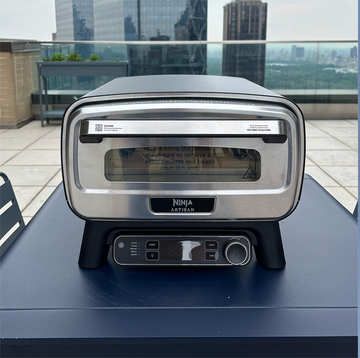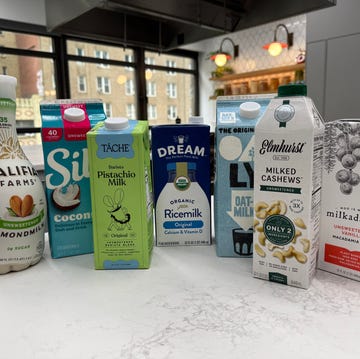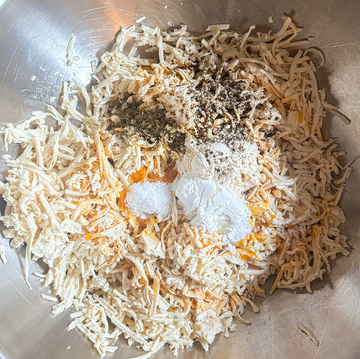Balsamic vinegar is so widely used that we rarely give it the glory it deserves. While I’ve not always held balsamic vinegar in its highest regard, I’ve come to gain outside respect for it. It's a popular ingredient many have stocked in their pantry for salads or glazes, and it's easily accessible at the market, with options ranging from domestic brands to the real aceto balsamico, which is only produced in the Italian Emilia Romagna provinces of Modena and Reggio Emilia.
When it comes to authentic aceto balsamico there are multiple nuances to its viscosity, sweet and puckery nature, bottle shape, and labeling. Just like real Parmigiano Reggiano, true aceto balsamico follows strict guidelines. Especially if aged for many years, aceto balsamico is rich and sweet and also doesn't contain any additives or colors, compared to some that are not authentic.
There are many wonderful domestic options, though while these products may be called "balsamic vinegar," they lack the protected status and often differ in production methods and quality from the traditional Italian varieties. It really comes down to your preference!
However, true aceto balsamico can be more expensive, so it's good to know that you're getting what you're paying for! If you're interested in making sure the balsamic you're buying is authentic aceto, it's simple to do. According to Misi and Lilia Chef and Restaurateur Missy Robbins, “It’s easiest to look for clues on the bottle!” Look for these indications on when shopping for this zingy ingredient:
If It Only Says "Balsamic Vinegar," Look Further
If the label on the bottle reads simply “balsamic vinegar,” it’s not aceto. To be authentic aceto, it should not be produced anywhere outside of the Italian Emilia Romagna provinces of Modena and Reggio Emilia. It should read “Aceto Balsamico di Modena PGI” or “Aceto Balsamico di Modena Tradizionale PDO.”
This doesn’t mean that all balsamic vinegars outside of this region are mediocre, it just means they're inauthentic. Excellent domestic brands to consider include O Olive Oil and Vinegar or Brightland, both produced in the U.S.
It Has “Protected” Labels
You’ll typically see bottles labeled PDO (or DOP) and PGI (IGP), acronyms referring to the Holy Grail of Italian food products. Any balsamic vinegar slapped with PDO “protected designation of origin” is confined to its area of origin—meaning everything from the growing and production must happen right in Modena.
As for IGP, some parts of the process take place in Modena. And typically, the Aceto Balsamico di Modena PGI are aged for at least 60 days. You’ll also notice that the PDO sticker is red and yellow, while the IGP sticker is blue and yellow.
There Should Be Minimal Ingredients
It’s vital to check out the ingredient label. In the case of Aceto Balsamico Tradizionale di Modena PDO, the only ingredient listed should be "grape must" (the juice of grapes). On Aceto Balsamico di Modena PGI labels, you will find "grape must and wine vinegar."
Robbins mentions that “some producers of inauthentic balsamic vinegar of Modena may use corn syrup, thickeners, and food colorings.” Which is exactly what you don’t want.
Look For A Specific Bottle Material & Shape
Whether a PGI or PDO you’ll never see authentic balsamic vinegar in plastic bottles. According to the Consorzio tutela Aceto Balsamico di Modena, the consortium responsible for protecting and promoting Balsamic Vinegar of Modena PGI, the PGI product will be bottled in ceramic, terracotta, glass, or wood vessels. And Aceto Balsamico Tradizionale di Modena PDO only ever comes packaged in a 100 ml, distinct bottle. “If the bottle is any other shape, it’s not the real deal!” notes Robbins.
It Should Be 60 Days To 25 Years Old
The minimum age requirement for a PGI balsamic vinegar is 60 days. Robbins explains that when Balsamic Vinegar of Modena PGI is aged for three-plus years, it earns an “Invecchiato” or “Aged” classification. As for PDO balsamic vinegar, it absolutely must be aged at least 12 years—and up to 25. When it ages to 25 years, she notes, it’s labeled “Extra Vecchio,” or “Extra-aged.” Because it takes a long time and a lot of effort to produce, it is considered precious, Robbins says.
Pay attention to the label before snatching any bottle off the shelf. With these indicators, you’ll discover the right one.















